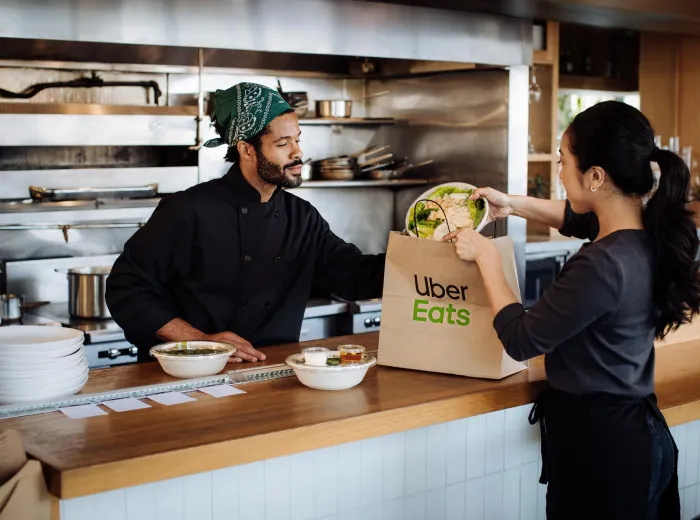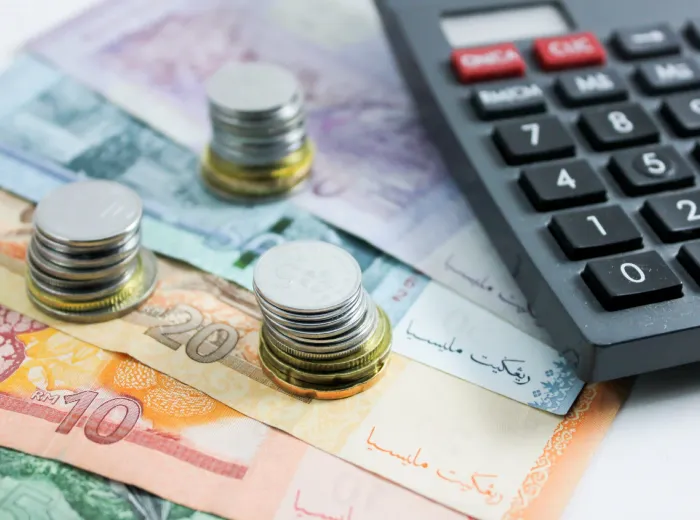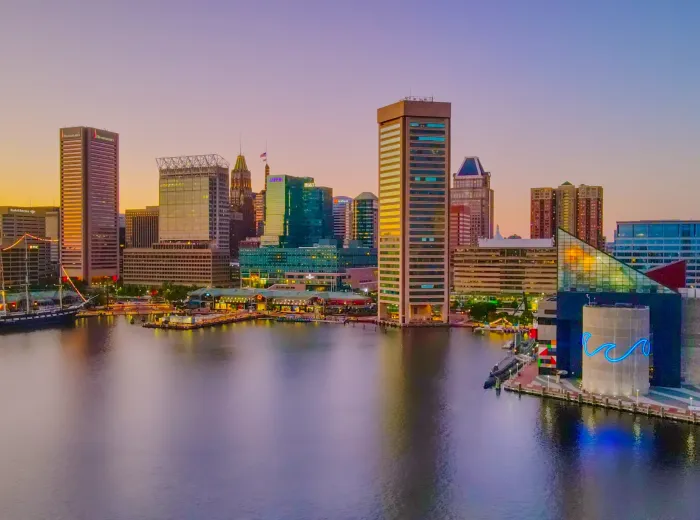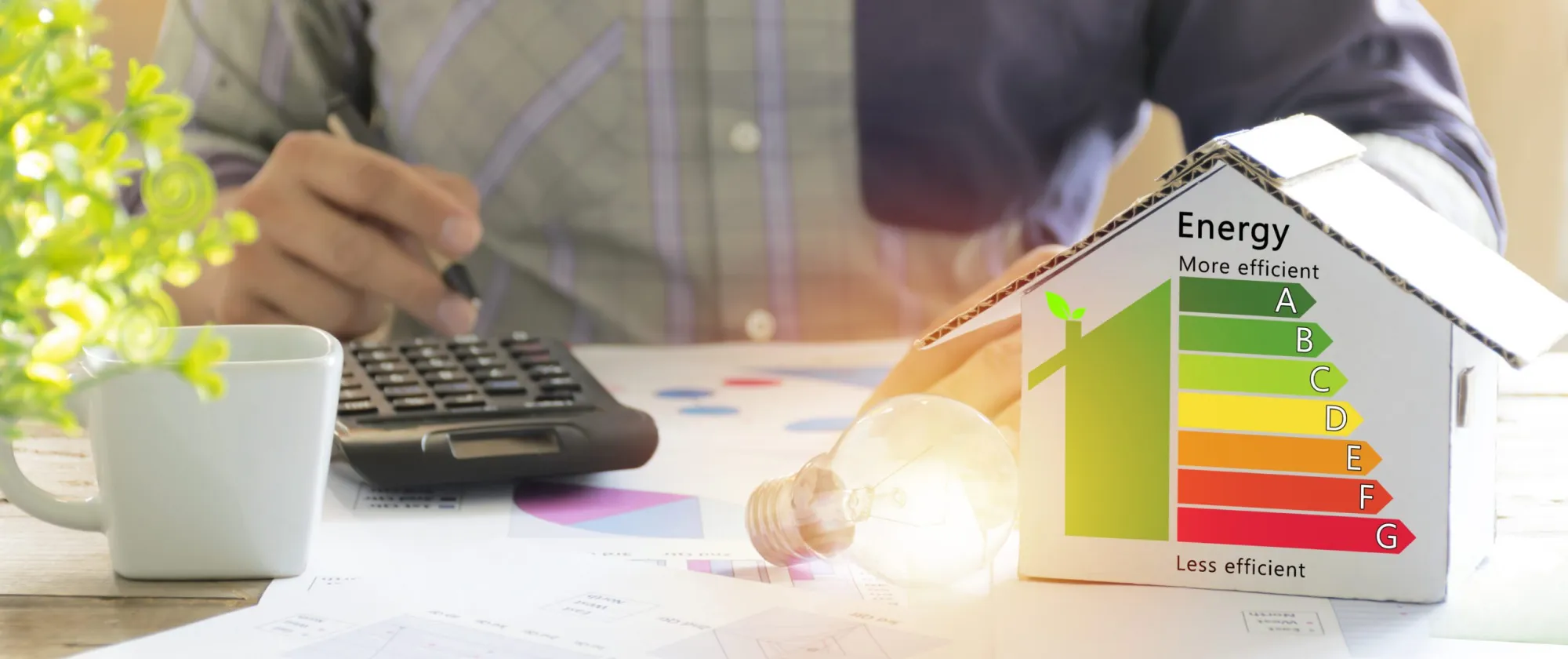
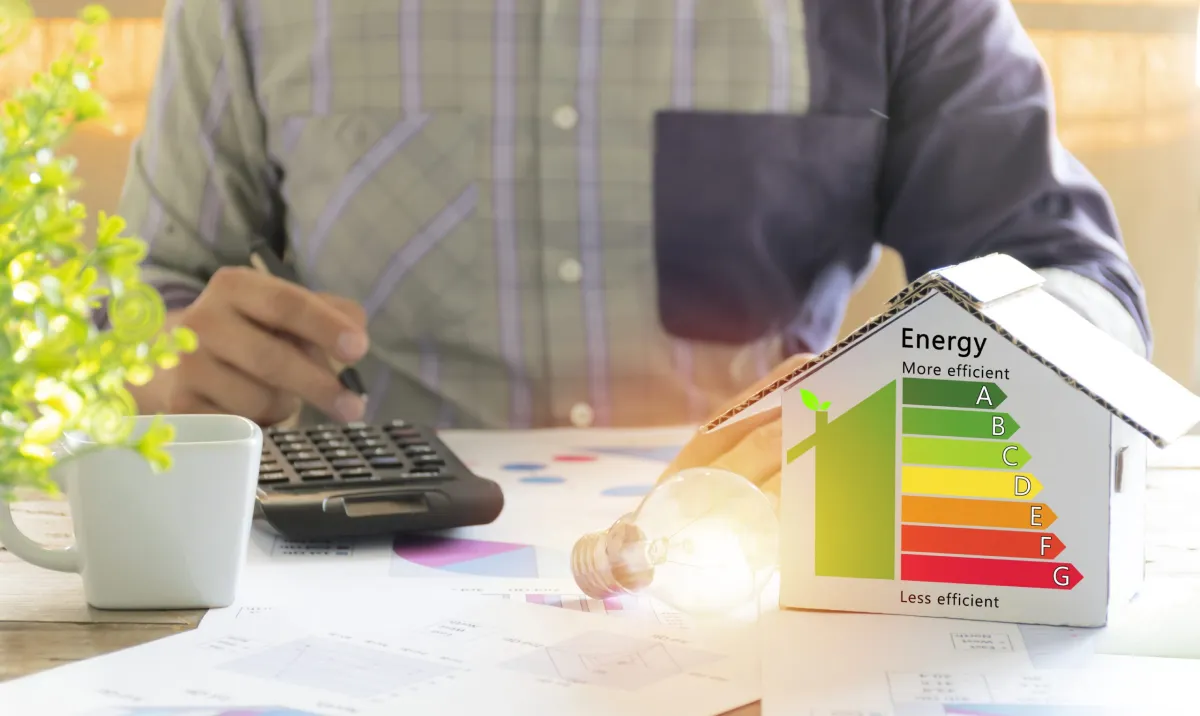
Energy-saving Tips for Commercial Kitchens and Restaurants
Running a commercial kitchen comes with high energy demands, from powering industrial ovens to keeping refrigerators at optimal temperatures. In fact, restaurants use nearly 2.5 times more energy per square foot than other commercial spaces. This results in hefty utility bills that can significantly cut into your profit margins.
Fortunately, adopting energy-efficient practices doesn’t just lower costs—it also enhances operational efficiency, reduces environmental impact, and improves overall sustainability. By making small yet strategic changes, restaurant owners can cut energy costs by up to 20% without compromising kitchen performance.
This guide will walk you through practical and cost-effective energy-saving tips that can help reduce electricity, gas, and water consumption in your restaurant. From choosing the right equipment to optimizing refrigeration, HVAC, and lighting, you’ll discover actionable strategies that benefit both your business and the environment.
Why Energy Efficiency Matters in Restaurants
Energy efficiency is more than just a cost-saving strategy—it’s a key factor in running a profitable and sustainable restaurant. With rising energy prices and increasing environmental concerns, restaurant owners must focus on minimizing energy waste to stay competitive. By improving energy efficiency, businesses can reduce overhead costs, enhance sustainability efforts, and improve kitchen operations without sacrificing food quality or service speed.
The Impact of High Energy Costs on Restaurant Profits
- Restaurants consume large amounts of energy due to continuous operation of kitchen equipment, refrigeration units, HVAC systems, and lighting.
- Energy bills can account for up to 10% of total operating expenses, making them one of the most significant overhead costs.
- Wasting energy means lower profit margins—money spent on excess energy could be invested in staff training, marketing, or menu improvements.
- Simple energy-saving changes, such as upgrading to efficient equipment or training staff, can significantly reduce monthly expenses.
💡 Fact: A single commercial kitchen appliance running inefficiently can add thousands of dollars to your annual energy bill.
Environmental Benefits of Reducing Energy Consumption
- The restaurant industry is a major contributor to greenhouse gas emissions due to energy consumption and food waste.
- Reducing energy use helps lower carbon footprints, making your restaurant more environmentally responsible.
- Many customers prefer to support eco-friendly businesses, giving energy-conscious restaurants a competitive edge.
- Sustainable practices, such as energy-efficient cooking techniques and renewable energy adoption, contribute to long-term environmental health.
💡 Tip: Displaying an energy-efficient certification or highlighting sustainability initiatives can attract environmentally conscious customers.
How Energy Efficiency Enhances Operational Sustainability
- Energy-efficient kitchens experience fewer equipment breakdowns, reducing maintenance costs and downtime.
- Improved efficiency leads to a safer working environment, as excessive heat from overworked appliances can be hazardous.
- Restaurants with lower energy demands can better withstand fluctuations in energy prices, making them more financially stable.
- Incorporating smart energy management systems ensures that energy-saving habits become part of daily operations.
💡 Example: Many successful restaurant chains have cut energy costs by 15-20% simply by switching to LED lighting, optimizing refrigeration, and implementing energy-conscious cooking methods.
By understanding why energy efficiency matters, restaurant owners can take proactive steps to lower costs, reduce environmental impact, and improve long-term sustainability. Next, let’s explore the biggest energy-consuming areas in a commercial kitchen and where energy waste often occurs.
Understanding Energy Consumption in a Commercial Kitchen
A commercial kitchen is a high-energy environment where multiple appliances run simultaneously, often 12–18 hours a day. From ovens and refrigerators to dishwashers and exhaust fans, these energy-intensive operations contribute significantly to overall utility costs. To effectively reduce energy waste, restaurant owners must first identify where energy consumption is highest and take steps to optimize efficiency in these areas.
Key Energy-intensive Areas in Restaurants
Certain areas in a restaurant consume more energy than others, making them prime targets for energy-saving efforts:
- Cooking Equipment – Ovens, grills, fryers, and stoves use gas or electricity continuously, making them some of the highest energy consumers.
- Refrigeration & Freezing – Walk-in coolers, under-counter refrigerators, and freezers run 24/7, accounting for a large percentage of electricity use.
- HVAC Systems & Ventilation – Heating, cooling, and exhaust systems are essential for maintaining a comfortable environment but can be energy-intensive.
- Dishwashing & Cleaning – Industrial dishwashers, water heaters, and sanitation equipment require both electricity and hot water, adding to energy costs.
- Lighting & Electronics – Dining area lighting, kitchen task lighting, POS systems, and other electronic devices constantly draw power even during non-peak hours.
💡 Tip: A professional energy audit can pinpoint which appliances and systems consume the most energy, helping you target improvements where they matter most.
Common Sources of Energy Waste in Kitchens
Many restaurants unintentionally waste energy, leading to unnecessarily high bills. The most common causes of energy waste include:
- Leaving equipment on when not in use – Ovens, fryers, and grills left running during slow hours waste significant energy.
- Inefficient refrigeration practices – Overloading refrigerators, leaving doors open too long, or failing to seal gaps can increase energy consumption.
- Poor ventilation management – Running exhaust fans at full power all day instead of using demand-controlled ventilation wastes energy.
- Inefficient lighting habits – Keeping all lights on throughout the day, even in unused areas, leads to unnecessary electricity use.
- Water waste in dishwashing – Running dishwashers on half loads and using high-flow faucets increase both water and energy costs.
💡 Example: A single leaking refrigerator door seal can cause a compressor to work 50% harder, consuming more energy and shortening the equipment’s lifespan.
The Role of Equipment Efficiency in Energy Consumption
The efficiency of kitchen equipment directly impacts overall energy costs. Outdated or poorly maintained equipment can consume up to 30% more energy than modern, energy-efficient models. Here’s why:
- Old appliances tend to use more energy due to outdated technology and worn-out components.
- Dirty or clogged equipment (such as grease-covered stove burners or uncleaned refrigerator coils) reduces performance and increases power usage.
- Improperly sized appliances (such as oversized refrigerators or overpowered HVAC systems) waste energy by running at unnecessary capacity.
- Lack of smart energy features – Modern kitchen equipment comes with auto-shutoff, energy-saving modes, and efficient heating elements that reduce energy waste.
💡 Tip: Investing in Energy Star-rated appliances can significantly lower energy bills and improve long-term operational efficiency.
By understanding where energy consumption is highest and where waste occurs, restaurant owners can make smarter decisions about energy usage. The next step is optimizing kitchen equipment to maximize energy efficiency and minimize unnecessary costs.
How to Optimize Kitchen Equipment for Energy Efficiency
Optimizing kitchen equipment is one of the most effective ways to cut energy costs in a commercial restaurant. Cooking appliances, refrigerators, and dishwashers account for a significant portion of energy consumption, but strategic upgrades and proper maintenance can drastically improve efficiency. Below are key ways to reduce energy usage and extend the lifespan of your kitchen equipment.
Choosing Energy-efficient Appliances
Investing in energy-efficient equipment pays off in the long run. Although high-efficiency models may have a higher upfront cost, they use 30–50% less energy, leading to substantial savings on utility bills.
🔹 What to Look for When Upgrading Equipment
- Energy Star Certification – Equipment with this label meets strict energy efficiency guidelines.
- Automatic Shutoff Features – Reduces idle energy waste by turning off when not in use.
- Efficient Heating Elements – Induction cooktops and high-efficiency ovens use less power.
- Insulated Refrigerators and Freezers – Reduces heat loss and enhances cooling efficiency.
- Demand-controlled Ventilation Systems – Adjusts exhaust fan speed based on kitchen activity.
💡 Example: A restaurant that replaces a standard deep fryer with an Energy Star-rated fryer can save up to $450 annually in energy costs.
Regular Maintenance and Cleaning
Poorly maintained equipment works harder and consumes more energy. Regular cleaning and servicing not only reduce energy costs but also prevent unexpected breakdowns.
🔹 Essential Maintenance Practices:
- Refrigerators & Freezers – Clean condenser coils every three months to improve efficiency.
- Ovens & Ranges – Remove grease buildup and check door seals for heat retention.
- Fryers & Griddles – Scrape off carbon buildup to ensure even heat distribution.
- Dishwashers – Descale and clean filters to prevent excessive water and energy use.
- HVAC & Ventilation – Replace air filters and service ducts regularly to reduce strain.
💡 Tip: Implement a maintenance schedule and assign specific staff to inspect and clean appliances weekly.
Cooking Smarter, Not Harder
Adjusting cooking habits can significantly lower energy usage without affecting food quality. Small changes in kitchen routines can lead to big energy savings over time.
🔹 Energy-saving Cooking Techniques:
- Batch Cooking – Preparing multiple dishes at once minimizes oven and grill usage.
- Using Lids on Pots – Traps heat, reducing cooking time and energy waste.
- Turning Off Unused Burners – Reduces standby energy consumption.
- Preheating Wisely – Avoid excessive preheating; modern ovens heat up faster.
- Leveraging Carryover Cooking – Residual heat continues cooking food after turning off heat sources.
💡 Example: A restaurant that implements batch cooking can cut energy costs by up to 10% while improving kitchen efficiency.
When to Replace Old Equipment
At some point, repairing outdated appliances costs more than replacing them. Knowing when to upgrade can save money on maintenance and energy bills.
🔹 Signs It’s Time to Replace Kitchen Equipment:
- Excessive Energy Use – Old appliances consume more power due to worn-out components.
- Frequent Repairs – Constant breakdowns indicate inefficiency and rising maintenance costs.
- Slow Performance – Equipment that takes longer to heat, cool, or cook is wasting energy.
- Inconsistent Temperature Control – Fridges and ovens that fluctuate in temperature increase energy use.
💡 Tip: If an appliance is over 10 years old and requires frequent repairs, replacing it with an energy-efficient model is a smarter long-term investment.
By optimizing equipment selection, maintaining appliances, and adopting smarter cooking techniques, restaurant owners can dramatically cut energy costs without sacrificing efficiency. Next, let’s explore how refrigeration and cooling systems can be optimized for even greater savings.
Reducing Energy Costs in Refrigeration and Cooling
Refrigeration and cooling systems are among the biggest energy consumers in a commercial kitchen, running 24/7 to keep food fresh and safe. Inefficient refrigeration can lead to high electricity bills, food spoilage, and costly repairs. Implementing energy-saving strategies can significantly reduce operational expenses while maintaining food safety standards.
Proper Refrigerator and Freezer Management
Keeping refrigerators and freezers running efficiently requires proper usage, organization, and maintenance. Poor refrigeration practices can lead to excessive energy waste and higher electricity bills.
🔹 Best Practices for Energy-efficient Refrigeration:
- Set the Right Temperature – Keep refrigerators at 37–40°F (3–4°C) and freezers at 0°F (-18°C) for optimal efficiency.
- Avoid Overloading Shelves – Overpacked units block airflow, causing the compressor to work harder.
- Check and Replace Door Seals – Worn-out gaskets allow cold air to escape, increasing energy consumption.
- Keep Doors Closed – Train staff to minimize open-door time to prevent temperature fluctuations.
- Use Strip Curtains for Walk-ins – Reduces temperature loss when opening walk-in coolers and freezers.
💡 Tip: A refrigerator door left open for just 1 minute can take up to 30 minutes to return to its optimal temperature, consuming extra energy.
Reducing Cooling Load in the Kitchen
The heat generated by cooking appliances, lighting, and people increases the demand for refrigeration and air conditioning. Reducing this load can lower cooling costs and improve kitchen comfort.
🔹 Ways to Reduce Excess Heat and Cooling Load:
- Separate Heat-producing Equipment – Keep ovens, grills, and fryers away from refrigeration units to prevent overworking compressors.
- Improve Airflow in the Kitchen – Use ceiling fans and ventilation systems to keep the space cooler.
- Turn Off Unused Appliances – Even when idle, ovens and grills radiate heat, increasing cooling needs.
- Schedule Cooling System Maintenance – Regular cleaning of AC filters and condenser coils ensures efficiency.
💡 Example: A restaurant that relocates its freezer away from the cooking area can cut refrigeration energy use by up to 10%.
Energy-efficient Walk-in Freezer Strategies
Walk-in coolers and freezers consume large amounts of energy, but simple improvements can make a big difference in efficiency.
🔹 How to Optimize Walk-in Freezer Energy Use:
- Install LED Lighting – Reduces energy consumption and minimizes heat output inside the freezer.
- Upgrade to High-efficiency Evaporator Fans – Modern fans use up to 70% less energy than standard models.
- Ensure Proper Insulation – Inspect walls, doors, and floors for leaks and insulation gaps that allow cold air to escape.
- Use Defrost Timers – Over-defrosting wastes energy; set defrost cycles based on actual need rather than fixed intervals.
- Monitor and Log Temperatures – Installing smart temperature sensors helps detect issues before they lead to major energy waste.
💡 Tip: If your walk-in freezer runs constantly without shutting off, it may have an air leak or overloaded compressor, which can cause higher energy bills and equipment failure.
By improving refrigeration practices, reducing unnecessary cooling loads, and maintaining equipment regularly, restaurants can significantly lower their energy expenses. Next, let’s explore how optimizing lighting solutions can further enhance energy efficiency.
Smart Lighting Solutions for Restaurants
Lighting is an essential component of any restaurant, affecting both ambiance and operational efficiency. However, inefficient lighting can add unnecessary costs to your energy bills. By switching to energy-saving lighting solutions and adopting smart controls, restaurants can reduce electricity consumption by up to 50% without compromising visibility or atmosphere.
Switching to LED Lighting
Traditional incandescent and fluorescent bulbs consume more electricity and have shorter lifespans than modern alternatives. LED lighting is the best option for energy-efficient restaurants.
🔹 Benefits of LED Lights for Restaurants:
- Lower Energy Consumption – LEDs use 75% less energy than incandescent bulbs.
- Longer Lifespan – LED bulbs last 25 times longer, reducing replacement costs.
- Better Light Quality – Provides brighter and more consistent illumination for kitchens and dining areas.
- Reduced Heat Output – Incandescent bulbs generate heat, making air conditioning work harder. LEDs stay cool and save on cooling costs.
🔹 Best Areas to Install LED Lighting:
- Kitchen & Prep Areas – Use bright task lighting for improved safety and visibility.
- Dining Area & Bar – Opt for warm, dimmable LEDs to create a cozy atmosphere.
- Walk-in Coolers & Freezers – LEDs perform well in cold environments and don’t add heat.
- Outdoor Signage & Parking – LED-lit signs consume 80% less energy than neon signs.
💡 Example: A restaurant that replaces 50 traditional bulbs with LEDs can save over $1,000 per year in electricity costs.
Using Motion Sensors and Timers
Many restaurants leave lights on unnecessarily, leading to wasted energy. Motion sensors and timers help control lighting automatically, reducing energy waste.
🔹 How to Use Motion Sensors for Energy Savings:
- Install in Storage Rooms & Walk-in Coolers – Lights turn on only when needed, avoiding unnecessary usage.
- Use in Restrooms – Prevents lights from staying on all day when unoccupied.
- Office & Back-of-house Areas – Ensures staff rooms and break areas aren’t lit when empty.
🔹 The Role of Timers in Energy Efficiency:
- Dimming Dining Area Lights – Reducing brightness during off-peak hours saves power.
- Outdoor Signage & Patio Lights – Automatically turns off during daylight hours.
- Kitchen & Cleaning Area Lights – Scheduled shutoff prevents unnecessary use after closing.
💡 Tip: Smart lighting systems allow you to control brightness levels and schedules remotely using a smartphone or central control panel.
Reducing Unnecessary Lighting During Downtime
Restaurants often leave lights on even when they aren’t needed, leading to higher electricity bills. Simple adjustments can significantly lower lighting costs.
🔹 How to Cut Unnecessary Lighting Use:
- Use Natural Light Whenever Possible – Position seating areas near windows to reduce the need for artificial lighting during the day.
- Zone Your Lighting – Keep dining area lights dim when fewer customers are present.
- Turn Off Non-essential Lights – Encourage staff to switch off kitchen prep lights once service is over.
- Use Smart Dimmers – Adjust brightness levels to match business hours and occupancy.
💡 Example: A restaurant that automates lighting schedules and installs motion sensors can cut lighting costs by 30% without affecting ambiance or safety.
By switching to LED bulbs, using motion sensors and timers, and reducing unnecessary lighting, restaurants can significantly lower their electricity consumption. Next, let’s explore how optimizing HVAC systems can lead to even greater energy savings.
Optimizing HVAC Systems for Energy Efficiency
Heating, ventilation, and air conditioning (HVAC) systems play a crucial role in maintaining a comfortable dining and kitchen environment. However, HVAC units are one of the biggest energy consumers in a restaurant, accounting for 25–40% of total energy usage. Proper optimization can significantly reduce energy costs, improve air quality, and enhance staff and customer comfort.
Proper Ventilation and Airflow Management
Effective ventilation is essential for removing heat, smoke, and airborne grease while maintaining energy efficiency. Poor airflow management can overwork HVAC systems, leading to higher energy bills.
🔹 How to Optimize Ventilation for Energy Efficiency:
- Adjust Exhaust Fan Settings – Run exhaust fans only when necessary, rather than at full power all day.
- Install Demand-controlled Ventilation (DCV) – Uses sensors to automatically adjust fan speed based on kitchen activity, saving energy.
- Maintain Ventilation Hoods – Grease buildup in hoods and filters reduces efficiency. Clean filters weekly to maintain airflow.
- Ensure Proper Air Balance – Too much exhaust can create negative air pressure, pulling in hot outdoor air and making HVAC systems work harder.
💡 Example: A restaurant that installs demand-controlled ventilation can reduce HVAC energy costs by up to 60%.
Smart Thermostat and Zoning Strategies
Most restaurants waste energy by running HVAC systems at full capacity even when it’s unnecessary. Smart thermostats and zoning strategies help regulate temperatures efficiently, reducing energy consumption.
🔹 Benefits of Smart Thermostats:
- Automated Scheduling – Adjusts temperature based on business hours and occupancy.
- Remote Monitoring – Allows restaurant owners to control HVAC settings from a smartphone or computer.
- Adaptive Temperature Control – Prevents overcooling or overheating, maintaining a comfortable balance.
🔹 How to Use Zoning for Maximum Efficiency:
- Separate Kitchen and Dining Areas – Kitchens generate excess heat, so cooling these areas separately prevents overuse of air conditioning in dining spaces.
- Install Air Curtains – Reduces temperature fluctuations caused by frequent door openings.
- Use Ceiling Fans Strategically – Helps circulate air and reduce reliance on air conditioning.
💡 Tip: Setting thermostats one degree higher in summer and one degree lower in winter can cut energy costs by 3–5% annually.
Reducing Heating and Cooling Costs in Restaurants
Restaurants often overuse heating and cooling systems, leading to unnecessary energy waste. Small adjustments can significantly reduce HVAC costs while keeping customers and staff comfortable.
🔹 Energy-saving Tips for Heating & Cooling:
- Keep Doors and Windows Closed – Prevents loss of conditioned air, reducing HVAC strain.
- Seal Air Leaks – Use weather stripping and insulation to prevent heat loss in winter and cooling loss in summer.
- Schedule Regular HVAC Maintenance – Dirty coils and clogged filters force systems to work harder, consuming up to 15% more energy.
- Upgrade to High-efficiency HVAC Units – Modern systems use 30% less energy than older models.
💡 Example: A restaurant that regularly cleans HVAC filters and seals air leaks can cut heating and cooling costs by 15%.
By improving ventilation, using smart thermostats, zoning heating and cooling areas, and maintaining HVAC systems, restaurants can significantly lower their energy consumption while creating a more comfortable environment. Next, let’s look at how reducing water and gas usage can further enhance energy savings.
Reducing Water and Gas Consumption in the Kitchen
Water and gas are two of the most overlooked sources of energy waste in a commercial kitchen. Cooking, dishwashing, and cleaning processes require large amounts of water and gas, leading to high utility costs. By implementing smarter usage strategies and upgrading to energy-efficient equipment, restaurants can significantly reduce waste and save money.
Efficient Use of Gas Stoves and Ovens
Gas appliances are essential for many restaurant kitchens, but inefficient practices can lead to excessive energy waste. Optimizing how gas stoves and ovens are used can cut consumption while maintaining cooking performance.
🔹 How to Reduce Gas Usage in Cooking:
- Use the Right-sized Burner – Match pot and pan sizes to the burner to prevent heat loss.
- Turn Off Burners When Not in Use – Avoid leaving burners on during prep time when no cooking is happening.
- Upgrade to Energy-efficient Ovens – Convection ovens use fans to circulate heat, cooking food faster with 20–30% less energy.
- Keep Oven Doors Closed – Every time the oven door opens, it loses up to 25°F, making it work harder to reheat.
- Optimize Pilot Lights – If using an older model, adjust pilot light flames to the lowest effective setting.
💡 Example: A restaurant that switches to a convection oven and reduces burner idle time can cut gas consumption by 25%.
Water-saving Tips for Dishwashing and Cleaning
Restaurants consume thousands of gallons of water daily, with dishwashing accounting for a significant portion. Reducing water usage not only lowers bills but also decreases energy needed for heating water.
🔹 Ways to Reduce Water Waste in Dishwashing:
- Use Low-flow Pre-rinse Spray Valves – Cuts water usage by 50% without reducing cleaning effectiveness.
- Run Dishwashers at Full Capacity – Avoid half-load cycles that waste both water and energy.
- Upgrade to an Energy-efficient Dishwasher – Modern models use 40% less water than traditional ones.
- Fix Leaks Immediately – A single leaking faucet can waste over 3,000 gallons of water per year.
- Train Staff on Efficient Cleaning Methods – Encourage scraping food waste before washing to reduce the need for excessive rinsing.
💡 Tip: Using cold water for pre-rinsing instead of hot water can reduce energy costs without affecting cleanliness.
How to Repurpose Water to Reduce Waste
Instead of letting water go down the drain, restaurants can implement water recycling techniques to maximize efficiency.
🔹 Smart Water Reuse Strategies:
- Collect and Reuse Cooking Water – Use pasta or vegetable boiling water for soup stocks or other cooking processes.
- Recycle Condensate Water – Water from HVAC systems and ice machines can be used for cleaning floors.
- Rainwater Harvesting – In areas where permitted, rainwater can be collected and used for landscaping and non-potable cleaning.
- Use Greywater Systems – Treated greywater can be repurposed for toilet flushing or irrigation.
💡 Example: A restaurant that installs a low-flow pre-rinse valve and fixes leaks can save over $1,000 per year in water costs.
By optimizing gas usage, adopting water-saving dishwashing practices, and repurposing water, restaurants can significantly lower their utility bills and environmental footprint. Next, let’s explore how training staff on energy efficiency can lead to even greater savings.
How to Train Staff for Energy Efficiency
Your restaurant’s energy-saving efforts will only be successful if your staff understands and follows best practices. Employees control everything from cooking processes to cleaning routines, making their behavior a key factor in energy efficiency. Training your team on how to reduce energy waste can lead to lower utility bills, improved kitchen efficiency, and a more sustainable operation.
Educating Employees on Energy-conscious Behaviors
A well-informed team is more likely to develop energy-efficient habits in their daily routines. Simple behavioral changes can significantly reduce energy costs over time.
🔹 How to Train Staff for Energy Awareness:
- Teach Equipment Shut-off Protocols – Train employees to turn off ovens, burners, and lights when not in use.
- Emphasize Smart Refrigeration Practices – Ensure staff closes refrigerator doors promptly and avoids overloading shelves.
- Reinforce Water-saving Habits – Educate kitchen and dishwashing staff on running dishwashers at full capacity and using low-flow faucets.
- Encourage Proper Use of HVAC Systems – Teach front-of-house staff to keep doors closed and avoid unnecessary thermostat changes.
- Promote Efficient Cooking Techniques – Instruct chefs to use batch cooking, preheat ovens properly, and match pot sizes to burners.
💡 Tip: Create signage with quick energy-saving reminders in key areas (e.g., near dishwashers, stoves, and light switches).
Implementing Energy-saving Checklists
A daily checklist ensures that energy-saving tasks become part of the routine. Assigning responsibilities to specific staff members keeps everyone accountable.
🔹 Sample Energy-saving Checklist:
✅ Turn off unused kitchen equipment (ovens, fryers, grills).
✅ Shut down non-essential lights in storage and back-office areas.
✅ Verify refrigerator and freezer doors are properly sealed.
✅ Ensure dishwashers are fully loaded before running.
✅ Check that exhaust fans and HVAC settings are adjusted for current needs.
💡 Example: A restaurant that enforces an end-of-shift energy checklist can reduce wasted electricity by 10–15% each month.
Incentivizing Staff Participation in Energy-saving Programs
Rewarding employees for energy-efficient behavior encourages ongoing participation and accountability. Creating an incentive program helps build a culture of sustainability in the workplace.
🔹 Ways to Motivate Staff for Energy Efficiency:
- Offer Performance Bonuses – Provide incentives for staff members who consistently follow energy-saving protocols.
- Gamify Energy Savings – Track monthly energy reductions and reward the team with the best energy-saving performance.
- Recognize and Appreciate Staff Efforts – Feature top-performing employees on a “Green Team” board or employee-of-the-month program.
- Provide Eco-friendly Rewards – Offer reusable water bottles, gift cards, or extra break time for staff who contribute to energy efficiency goals.
💡 Example: A restaurant that introduces a monthly team challenge to cut energy use can reduce overall utility costs by 5–10% while boosting employee engagement.
By educating staff, implementing checklists, and offering incentives, restaurant owners can ensure long-term energy efficiency across all areas of the business. Next, let’s explore how technology can further enhance energy savings.
Using Technology to Monitor and Reduce Energy Use
Technology is transforming the way restaurants track, control, and optimize energy consumption. With smart energy monitoring systems and automated processes, restaurant owners can identify inefficiencies, reduce waste, and lower utility bills without manual oversight. Investing in the right tools can lead to significant long-term savings while making operations more sustainable.
Smart Energy Monitoring Systems
Energy monitoring systems track and analyze real-time energy usage, helping restaurant owners pinpoint where energy is being wasted. These systems provide actionable insights that allow for strategic energy-saving decisions.
🔹 Benefits of Energy Monitoring Systems:
- Real-time Usage Tracking – Identifies which appliances consume the most energy.
- Automated Alerts – Notifies staff when equipment is running inefficiently or consuming excess power.
- Historical Data Analysis – Helps compare energy usage trends over time and measure improvements.
- Remote Access & Control – Allows managers to monitor and adjust energy settings from anywhere.
🔹 Top Energy Monitoring Tools for Restaurants:
- Wattics – Provides energy analytics and customized reports.
- Sense – Detects which appliances use the most electricity.
- Verdigris – Uses AI to predict and prevent energy waste.
💡 Example: A restaurant that installs an AI-powered energy monitoring system can reduce electricity bills by up to 20% by identifying inefficient equipment and usage patterns.
Automating Energy-saving Processes
Automation technology reduces human error and ensures consistent energy-saving practices in a restaurant. From smart thermostats to automatic equipment shutdowns, these solutions help optimize operations effortlessly.
🔹 Ways to Automate Energy Efficiency:
- Smart Thermostats – Adjust temperature settings based on business hours and occupancy.
- Motion Sensor Lighting – Automatically turns lights on and off in storage rooms, restrooms, and back-of-house areas.
- Automatic Equipment Shutdown – Ensures unused appliances (grills, fryers, and ovens) power down after a certain period.
- IoT-connected Kitchen Equipment – Allows remote monitoring and control of refrigeration, HVAC, and lighting systems.
💡 Tip: Restaurants using smart scheduling for lighting, heating, and kitchen equipment can cut electricity use by 15–30% without affecting service quality.
Smart Scheduling for Energy Optimization
Timing is crucial when it comes to energy consumption. Scheduling energy-intensive tasks efficiently can significantly lower costs.
🔹 Energy-saving Scheduling Strategies:
- Preheat Ovens Just Before Use – Avoid turning on ovens long before cooking starts.
- Run Dishwashers During Off-peak Hours – Utility rates are often lower during non-peak times.
- Stagger Equipment Usage – Avoid running multiple high-energy appliances at the same time.
- HVAC Adjustments Based on Business Hours – Reduce heating/cooling when the restaurant is closed or during slow periods.
💡 Example: A restaurant that shifts dishwashing and refrigeration defrost cycles to off-peak hours can cut energy bills by 5–10% due to lower utility rates.
By leveraging smart energy monitoring, automating processes, and optimizing scheduling, restaurants can significantly reduce energy waste while maintaining efficiency. Next, let’s explore government incentives and rebates that can help restaurants save even more on energy costs.
Government Incentives and Rebates for Energy Efficiency
Many governments offer incentives, tax credits, and rebates to encourage businesses, including restaurants, to invest in energy-efficient equipment and sustainable practices. These programs help offset the upfront costs of energy-saving upgrades, making it more affordable for restaurant owners to transition to greener operations. By taking advantage of these financial benefits, restaurants can lower costs, improve sustainability, and stay ahead of regulations.
Tax Credits and Rebates for Energy-efficient Equipment
Government agencies and utility companies often provide rebates and tax incentives for businesses that purchase energy-efficient appliances. These incentives help cover the cost of upgrading to Energy Star-rated equipment.
🔹 Types of Equipment Eligible for Rebates:
- Energy-efficient Refrigerators & Freezers – Lower energy consumption and reduce operating costs.
- High-efficiency Ovens & Stovetops – Convection and induction units qualify for many rebate programs.
- LED Lighting Systems – Rebates are available for switching from incandescent or fluorescent bulbs.
- HVAC Upgrades – High-efficiency heating, cooling, and ventilation systems can qualify for tax credits.
- Smart Energy Management Systems – Government grants often support the installation of automated energy-monitoring tools.
💡 Tip: Check your local utility provider’s website or government energy department for available rebates before making an equipment purchase.
Local Grants for Sustainable Restaurant Initiatives
Some governments and environmental organizations offer grants to restaurants that commit to reducing energy consumption. These programs provide funding to support:
🔹 Eligible Sustainability Projects:
- Solar Panel Installation – Grants for restaurants investing in renewable energy solutions.
- Water Conservation Systems – Funding for low-flow faucets, greywater recycling, and rainwater harvesting.
- Kitchen Waste Heat Recovery Systems – Grants for businesses installing heat recapture systems to reuse excess kitchen heat.
- Green Building Retrofits – Financial assistance for improving insulation, ventilation, and energy-efficient building upgrades.
💡 Example: A restaurant applying for a state-sponsored sustainability grant could receive up to $10,000 toward energy-efficient upgrades.
How to Apply for Energy-saving Programs
Navigating energy rebate and incentive programs can seem complex, but following a structured approach can maximize your chances of receiving financial assistance.
🔹 Steps to Apply for Energy Efficiency Incentives:
- Research Available Programs – Visit government energy websites, local utility providers, and sustainability organizations.
- Assess Eligibility – Identify which equipment purchases or upgrades qualify for rebates.
- Gather Necessary Documentation – Collect invoices, equipment specifications, and proof of energy savings.
- Submit Applications – Fill out rebate or grant applications before deadlines to secure funding.
- Follow Up – Some programs require inspections or follow-ups before funds are released.
💡 Tip: Many utility providers offer free energy audits to help restaurant owners determine which upgrades qualify for rebates.
By leveraging tax credits, grants, and rebate programs, restaurant owners can reduce the cost of energy-efficient upgrades while making their businesses more sustainable. Next, let’s explore how to create a long-term strategy for energy efficiency.
Creating a Long-term Energy-saving Strategy
Energy efficiency isn’t just a one-time fix—it requires a long-term commitment to continuous improvements and smart operational strategies. By developing a sustainable energy-saving plan, restaurant owners can reduce costs, improve efficiency, and future-proof their business against rising energy prices. Implementing clear goals, tracking consumption, and building an energy-conscious culture ensures that energy savings become a permanent part of restaurant operations.
Setting Realistic Energy Reduction Goals
Every successful energy-saving plan begins with clear and measurable goals. Without a defined target, it’s difficult to track progress or identify areas for improvement.
🔹 How to Set Effective Energy Goals:
- Analyze Current Energy Usage – Conduct an energy audit to determine how much energy your restaurant consumes.
- Establish Percentage-based Reduction Targets – Aim to reduce energy costs by 10–20% over a set period.
- Prioritize High-impact Changes – Focus on lighting, refrigeration, and HVAC optimizations first, as these areas have the most significant energy use.
- Set Short-term & Long-term Goals – Example: Reduce electricity use by 5% in six months and 15% within two years.
- Review Goals Regularly – Reassess energy-saving strategies every six months and adjust based on results.
💡 Example: A restaurant that switches to LED lighting and installs smart thermostats can see an immediate 5–10% reduction in energy costs within the first year.
Tracking and Measuring Energy Consumption
Consistently monitoring energy use helps restaurants understand their progress and identify potential areas of waste. Advanced tracking tools make it easier to manage energy consumption in real time.
🔹 Best Methods for Tracking Energy Usage:
- Install an Energy Monitoring System – Tracks real-time electricity, gas, and water consumption.
- Review Utility Bills Monthly – Compare costs over time to measure the impact of energy-saving initiatives.
- Use Smart Meters & IoT Devices – Helps detect energy spikes and inefficiencies.
- Log Daily Equipment Usage – Keep records of kitchen equipment run times to spot unnecessary energy use.
💡 Tip: Many utility providers offer free or subsidized energy audits to help businesses understand their energy consumption.
Building a Culture of Sustainability in Your Restaurant
Sustained energy efficiency relies on staff participation and a company-wide commitment to sustainability. When employees actively engage in energy-saving efforts, long-term results become more achievable.
🔹 How to Encourage an Energy-conscious Work Culture:
- Provide Regular Training – Conduct periodic staff meetings on energy-saving practices.
- Assign Energy Champions – Designate a team member to monitor energy usage and ensure compliance.
- Create Incentive Programs – Offer bonuses or rewards for teams that help achieve energy-saving milestones.
- Promote Awareness with Signage – Place reminders near light switches, refrigerators, and equipment areas.
- Include Energy Efficiency in Employee Onboarding – New hires should be trained on sustainability practices from day one.
💡 Example: A restaurant that implements an employee energy-saving challenge can cut energy costs by 5–10% annually, simply through behavioral changes.
Planning for Future Energy-efficient Upgrades
Energy-efficient technology is constantly evolving. Restaurants should plan ahead for future improvements to stay competitive and sustainable.
🔹 Long-term Energy Efficiency Investments:
- Solar Panels – Reduces reliance on traditional electricity sources and lowers energy bills over time.
- Geothermal HVAC Systems – Uses underground energy to heat and cool efficiently.
- Battery Storage Systems – Stores excess energy for use during peak hours, reducing demand charges.
- Smart Kitchen Appliances – AI-powered equipment automatically adjusts energy consumption based on usage patterns.
- Green Building Upgrades – Enhances insulation, ventilation, and window efficiency.
💡 Tip: Consider energy-efficient financing programs or government incentives when budgeting for future energy-efficient investments.
By setting clear goals, tracking progress, fostering a sustainability-focused culture, and planning for long-term investments, restaurants can consistently reduce energy costs while improving efficiency and environmental responsibility.
Key Takeaways
Energy efficiency is a critical factor in managing a profitable and sustainable restaurant. By making strategic changes in equipment, operations, and staff training, restaurant owners can significantly reduce energy costs without compromising food quality or service speed. Below are the most important lessons from this guide:
✅ Understanding Energy Consumption – Identifying the biggest energy-consuming areas (cooking, refrigeration, HVAC, lighting) helps pinpoint where savings can be made.
✅ Optimizing Kitchen Equipment – Upgrading to Energy Star-rated appliances, maintaining equipment, and using efficient cooking techniques can lower electricity and gas consumption.
✅ Reducing Refrigeration and Cooling Costs – Keeping refrigerators at optimal temperatures, minimizing open-door time, and improving insulation reduces unnecessary energy waste.
✅ Implementing Smart Lighting Solutions – Switching to LED lighting, installing motion sensors, and using timers helps lower electricity bills.
✅ Enhancing HVAC Efficiency – Managing ventilation, smart thermostats, and zoning strategies ensures proper heating and cooling without overuse.
✅ Cutting Water and Gas Waste – Using low-flow faucets, energy-efficient dishwashers, and smart cooking techniques minimizes unnecessary consumption.
✅ Training Staff for Energy Efficiency – Educating employees, creating checklists, and offering incentives fosters a culture of sustainability.
✅ Leveraging Technology for Energy Management – Smart energy monitoring systems, automated equipment shutdowns, and IoT-connected appliances optimize energy use.
✅ Utilizing Government Incentives and Rebates – Taking advantage of tax credits, grants, and rebate programs helps offset the cost of energy-efficient upgrades.
✅ Building a Long-term Energy-saving Strategy – Setting realistic energy goals, tracking usage, and planning for future upgrades ensures continuous improvement.
By integrating these energy-saving strategies, restaurants can reduce operational costs, improve efficiency, and contribute to a more sustainable future while maintaining excellent service and food quality.
Frequently Asked Questions About Energy Efficiency in Restaurants
Looking to slash utility bills and boost your restaurant’s sustainability? This FAQ section answers the most searched questions on energy efficiency—helping both Google and your readers find quick, practical insights.
How much can restaurants realistically save with energy-efficient upgrades?
Many restaurants can reduce their energy costs by up to 20% through smart upgrades like LED lighting, optimized refrigeration, and energy-efficient kitchen equipment—a highly cost-effective move.
What are the main energy drains in a commercial kitchen?
The biggest energy consumers include cooking appliances (ovens, fryers, woks), refrigeration units, HVAC systems, dishwashers, and lighting. Identifying these hotspots is key to impactful energy savings.
Which energy-saving equipment upgrades offer the best return on investment?
Upgrading to Energy-Star rated appliances, installing LED lighting, and using demand-controlled ventilation or smart thermostats deliver substantial long-term savings and efficiency gains.
How can staff behavior contribute to lower energy consumption?
Training staff to turn off unused appliances, maintain refrigeration practices, run dishwashers only when full, and follow energy-saving checklists can lead to 10–15% monthly savings.
What role does technology play in sustaining energy efficiency?
Technologies like energy monitoring systems, motion-sensor lighting, smart thermostats, and automated appliance shutdowns not only reduce waste but also provide data-driven insights and automation for continuous improvement.
ABOUT THE AUTHOR
Erkin Coban
Your Customers Deserve The Best
And we got Menuviel for them.
The fastest and easy-to-use online QR menu with 12+ unique features. Choose Menuviel and elevate your service quality to the next level.
Use free for the first 30 days.

In This Article

Free AI Tools for Restaurants
TRY NOW ➜

Manage all your places from a single point
Easily create and manage menu items from a single point, ensuring consistency across all your locations.



